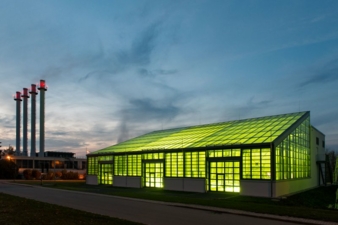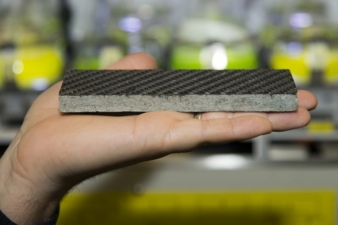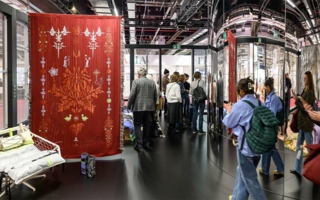27/03/2019 – TU Munich — auf Deutsch lesen
Algae and carbon fibres improve air quality
Researchers have developed a process that could efficiently remove carbon dioxide, a greenhouse gas, from the earth’s atmosphere.
Together with fellow researchers, chemists at the Technical University of Munich (TUM) have developed a process that, according to initial calculations, could efficiently remove carbon dioxide, a greenhouse gas, from the earth’s atmosphere. According to the most recent world climate report (IPCC Special Report on Global Warming of 1.5 °C) this process is of global significance.
Action is urgently needed if we are still to combat global warming, at least to some degree. In this context, the latest world climate report refers to the technology developed by chemists at the TUM. It functions as a net carbon sink, which could tackle the problem of global warming at its root.
It uses algae that absorb CO2 from the atmosphere, from power plants and steel industry emissions and turn it into algae oil. In a second step, it is then used to produce valuable carbon fibres. Initial analyses show that the process is economically efficient.
A climate-neutral process
The fundamental technological basis was established by Prof. Thomas Brück and his team at the Algae Cultivation Center at the Technical University of Munich. When studying algae, they discovered that they not only produce biofuel but that they can be efficiently made into polyacrylonitrile (PAN) fibres. The energy of parabolic solar reflectors then chars the PAN fibres to yield CO2-neutral carbon fibres.
Carbon fibres can be used to produce lightweight and high-strength materials. At the end of their life cycle, carbon fibres can be stored in empty coal seams, thus permanently removing the associated carbon dioxide equivalents from the atmosphere.
A climate-friendly economic model
Brück's colleagues, Prof. Uwe Arnold and Dipl.-Ing. Kolja Kuse, also examined the economic aspects, technical applications and the environmental impact of the entire process. “What we have here, is a novel climate-friendly economic model that effectively combines standard processes with innovations,” says Arnold.
“When carbon dioxide is used in plastics, it is quickly returned to the atmosphere in waste incineration plants after only a few years of use,” explains Kuse. “But when safely storing it, the carbon dioxide is removed from the atmosphere for millennia. This also provides clear advantages to capturing and storing carbon (CCS) underground.”
Carbon fibres from algae are no different from conventional fibres and are therefore compatible with all existing processes. Another important potential field of application is the construction industry, which accounts for a significant portion of global CO2 emissions.
Carbon fibres can also replace structural steel in construction materials. Due to their strength, less cement is required. Granite reinforced with carbon fibres can even be used for beams that have the same load-bearing capacity as steel while being as lightweight as aluminium.
Algae farms in the size of Algeria
Brück now wants to take his algae technology further. Large-scale plants in southern Europe and North Africa could be part of a wider plan. “The system can easily be scaled for larger projects,” says Brück. “Globally speaking, we could build plants on a scale equivalent to the size of Algeria. This would be sufficient to offset all CO2 emissions from airplanes, for example.”
Brück rejects claims that the technology would compete with agricultural land, as is the case with biogas. “Saltwater algae thrive particularly in sunny conditions. In North Africa, for example, there is plenty of space where agriculture isn’t possible.”
The research was funded by the Werner Siemens Foundation and the European Business Council for Sustainable Energy e.V. Besides the Werner Siemens Chair of Synthetic Biotechnology at the Technical University of Munich, project participants also included AHP GmbH & Co. KG (Berlin), TechnoCarbonTechnologies GbR (Munich) and the Institute of Textile Technology of RWTH Aachen University.
Dr. Ulrich Marsch, Technical University of Munich





